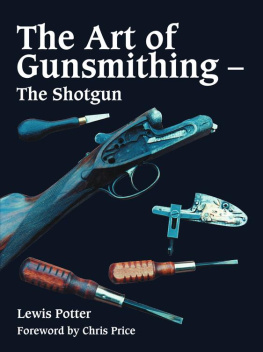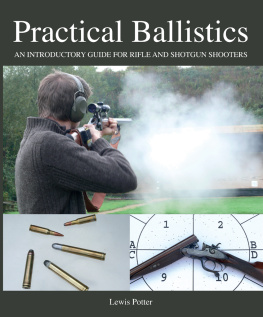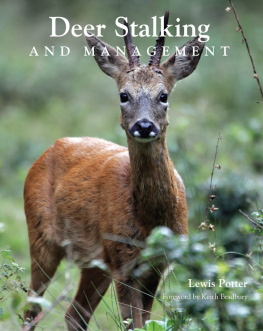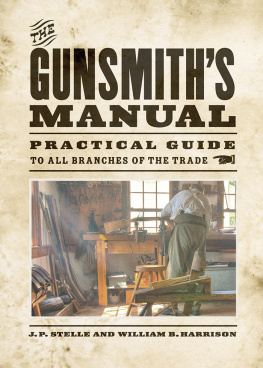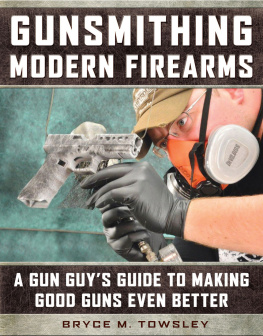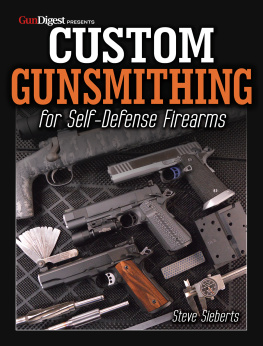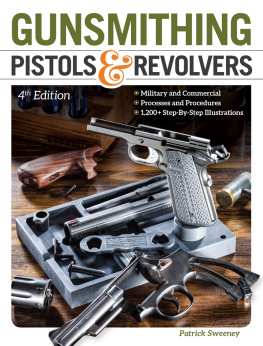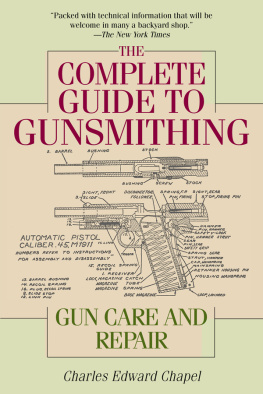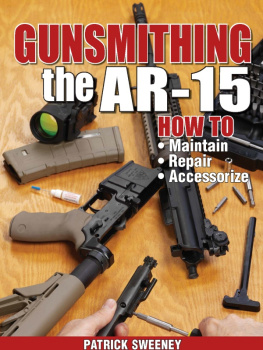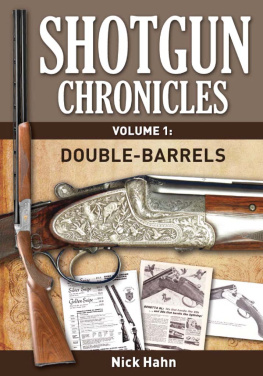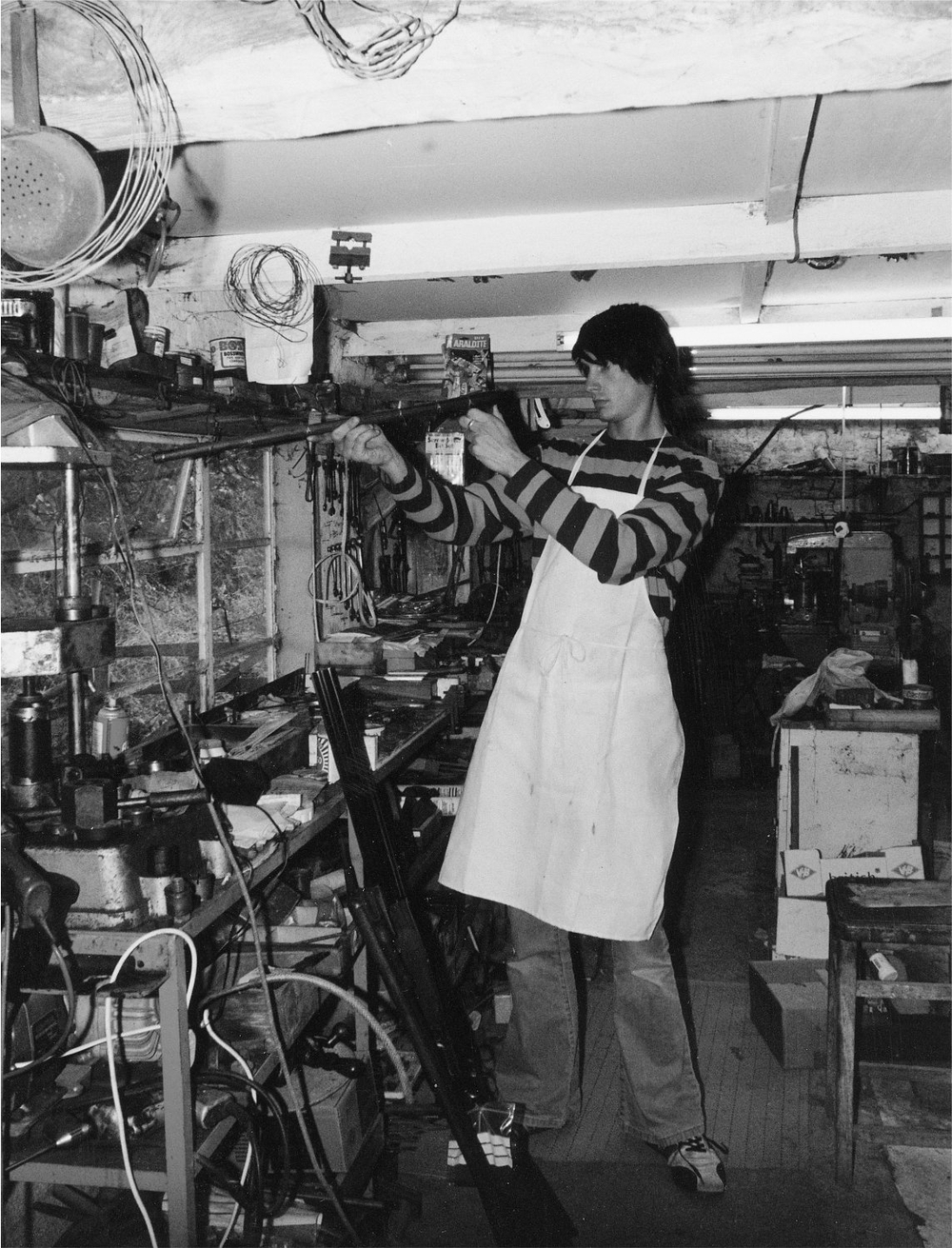I thank The Crowood Press for their help. I can happily blame my friend, George Wallace, retired firearms officer of the BASC, for volunteering me for this project I know he was, as ever, only doing his best to help another member of the shooting community.
I thank Chris Price, proprietor of Helston Gunsmiths and Master of the Worshipful Company of Gunmakers, for his enthusiasm in volunteering to proof-read most of the book and his helpful advice and comments; Ken Halbert, foreman at Westley Richards, for his help with historical detail; and Peter Spode for his contribution and guidance about engraving. I wish also to thank the following who have helped or assisted in any way, often at short notice: the Proof Master and staff of the Birmingham Proof House; Graham N Greener (W W Greener Sporting Guns Ltd); Mark Crudgington ( Crudgington Gunmakers) and Peter Thomson; Pete Green for his computer advice; Pierre Shone for assistance with photography; Nigel Teague (Teague Precision Chokes); Tony White (T R White & Co, Gunmakers); Graham Walker and Lawrence and Yvonne Langridge who always enthusiastically support my various projects. In fact, my appreciation goes to all who have shown their kindness by supporting this project , particularly those who let me photograph their guns for inclusion in this book.
It is not even all my own work. My wife, Sue, using considerable ability and determination, managed as always to turn my handwritten scribble into legible print. My daughter, Lucie Ellen, a student of the English language, exercised her skills by correcting the grammar. When required,my sons, Matt and Dan, proved good male models and Jamie helped whenever he could. Truly a family effort.
The gun trade in the United Kingdom is quite rightly regarded as one that boasts some of the best gunmakers in the world, not just from the gunmaking centres of London and Birmingham, but also from the provinces. Less famous are the best gunsmiths, who look after the shooting sportsman and woman with gun repairs, alterations and refurbishment .
Many gunsmiths, whether self-taught or drawing on experience gained during time served under a skilled gunsmith or gunmaker, like to preserve the mystery of the art of the gunsmith by protecting their secrets. Fortunately, Lewis Potter, a true craftsman and accomplished gunsmith, is not so selfish. His book, The Art of Gunsmithing, is long overdue. Each chapter specializes in an area covered by most competent gunsmiths, describing the problems encountered and some of the tricks of the trade used to effect a satisfactory repair. Two things strike me more than anything else with the content of this book: first, the way it is written makes for compulsive reading; second, and more importantly, it clearly reflects the authors commitment to quality. Lewis is not prepared to send out a poor-quality job, and does not mince his words when he encounters the work of the bodger.
Those of us who have spent a lifetime in the gun trade enjoy the company of fellow craftsmen -- there is so much to talk about, including our little ways of doing things, and so much helpful advice to be shared. The family spirit and camaraderie can be time-consuming and I have often spent up to a couple of hours talking gun repairs; I know Lewis has too!
Lewis is a modest man who loves his work, but he is also a master in his profession, and his book is a must for all readers interested in the true art of gunsmithing. For the old gunsmith it will inspire a thousand memories; for the new gunsmith it will provide a good push in the right direction. I am sure that everyone who reads this book will be looking out for the next volume; I do hope we get one, as Lewis has so much more to tell us.
Chris Price, Master,
The Worshipful Company of Gunmakers, 2005
It gives great pleasure to be asked to write a book as, apart from a fortunate few, many talented would-be authors spend what must seem like a lifetime trying to convince agents or publishers of their literary worth. Yet at first I hesitated, for the gunsmiths trade is one of the last in which, to a certain extent, the principles of the craft societies of old hold sway. It is a world in which, at one time (like so many crafts), a man was sworn not to divulge his masters secrets; knowledge was power and could place you above other men.
This, of course, has its down side. Men of amazing skills whom I have known, and have even been fortunate enough to count as friends, have gone to their grave with more accumulated knowledge than many of us could hope to acquire in two lifetimes . They took their secrets with them and I know I would have been richer for a share of their wisdom. Even when a man does try and pass on his knowledge it is not possible either to give or absorb everything so, inevitably, with each passing generation we lose a little more.
I put my thoughts to some other members of the gun trade whose knowledge and skills I admired, and was pleasantly surprised to receive their unhesitating support for this project. The general view was that, in these times when gunsmiths often find themselves in a declining trade with, seemingly , the hand of Government against them, shared knowledge is a valuable support. Such a book might also help foster a broader interest, and this is important because the present insularity held so dear by some in the trade will surely only hasten our decline.
Added to these considerations was the thought that, given the rate of change away from practical skills, some information should be recorded before it is lost. Consequently, some historically significant techniques that are now little used have been dealt with so that not only the principles but the actual working methods have been detailed.
If this all sounds rather grand that is not the intention. What is recorded within these pages is my own working experiences the work of a country gunsmith whose customer base varies from the Range Rover-driving Purdey owner to old Fred with his bucolic wit, bicycle and worn Stevens single.
L.A.S.P.
Introduction
Gunsmithing as an occupation is probably unique. Its existence, whether described as Hainaulter, armourer, smith or gunsmith, depending upon what part of history you examine, stretches right back in time to the earliest hand cannon of the fourteenth century. It has continued through periods of great technical change, from the matchlock to the wheel lock, the flint and percussion eras, and the overlapping use of all these types of firearms. The quantum leap in the nineteenth century was to the breech loader, which as a sporting shotgun was already perfected by the start of the twentieth century and has changed very little since. It is interesting to consider, when examining the latest creation from a maker of note, that when the first firearms were in use the longbow was at its peak and armoured knights rode to battle on horseback.

